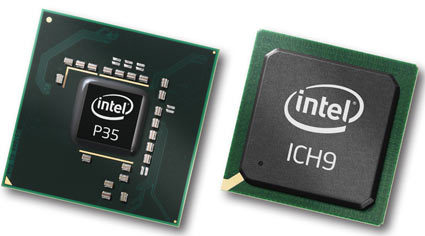Intel Intros 3-Series Chipsets with FSB1333 and DDR3
The Bearlake Chipset Ready For 45-nm Processors
Once a year, Intel upgrades its chipset families. While the launch date for mobile and server chipset solutions keeps changing, June has been the traditional time frame for major desktop chipset releases. We've seen as many as five chipset generations for the Pentium 4 between 2000 and 2005, and the current 965/975 chipsets have powered the Core 2 processor family for almost a year. Intel will present its new 3-series chipset family June 5 during Computex in Taipei, Taiwan, while non-disclosure agreements with worldwide media end today. This article details the nitty-gritty of Intel's 2007 Bearlake chipset family, also known as 3-series.
Over the last few years, the importance of PC core logic has changed drastically. Back in the days when the Pentium or Pentium II was sold in the channel, your chipset choice had a noticeable impact on overall performance. This isn't the case anymore today, because the second-level cache (L2) was relocated from the motherboard (slow) onto processor boards (Slot A for Athlon, Slot 1 for Pentium II/III - faster) and, subsequently, onto the processor die (Athlon on socket 462 and Pentium III on socket 370 - really fast). Integrating the L2 cache into the processor has been the most effective way of accelerating your system, because highly-efficient caching logic is the key to maximum performance.
Yet the chipset probably is the most important building block for a computer, because it carries all the important interfaces and largely determines the feature set of your system. Very dense transistor designs not only allow the processor makers to build 45-nm and 65-nm chips, but they also boost manufacturing yields and facilitate the production of chipset components. The result is a level of integration that has increased tremendously. All modern chipsets, for example, include a multitude of interfaces for add-in cards (PCI Express or PCI), sophisticated dual-channel memory controllers (Intel platforms only), lots of USB 2.0 controllers (there are two ports per controller), a HD Audio controller, Gigabit networking controllers and modern Serial ATA storage controllers with four to six ports. Some chipsets also offer management features. Clearly, the purchase of a full-featured mainstream motherboard provides the components an average user needs, with the exception of powerful graphics.
It doesn't come as a surprise that the new 3-series chipset clearly is a winner from a feature standpoint. First of all, Intel releases the P35 (mainstream) and the G33 (mainstream with integrated GMA 3100 graphics). The faster G35 and the enthusiast version X38 (PCI Express 2.0) will follow in Q3 Compare Prices on P35 Motherboards. Both P35 and G33 carry a DDR3 as well as a DDR2 memory controller. Both also include an upgraded Serial ATA controller for six devices and eSATA support. The most important feature may be official support for FSB1333 system speeds, which is required for the next-generation Core 2 processor generation based on 45-nm manufacturing (Penryn).
Join our discussion on this topic
Get Tom's Hardware's best news and in-depth reviews, straight to your inbox.
Current page: The Bearlake Chipset Ready For 45-nm Processors
Next Page Intel Chipset History
Patrick Schmid was the editor-in-chief for Tom's Hardware from 2005 to 2006. He wrote numerous articles on a wide range of hardware topics, including storage, CPUs, and system builds.
